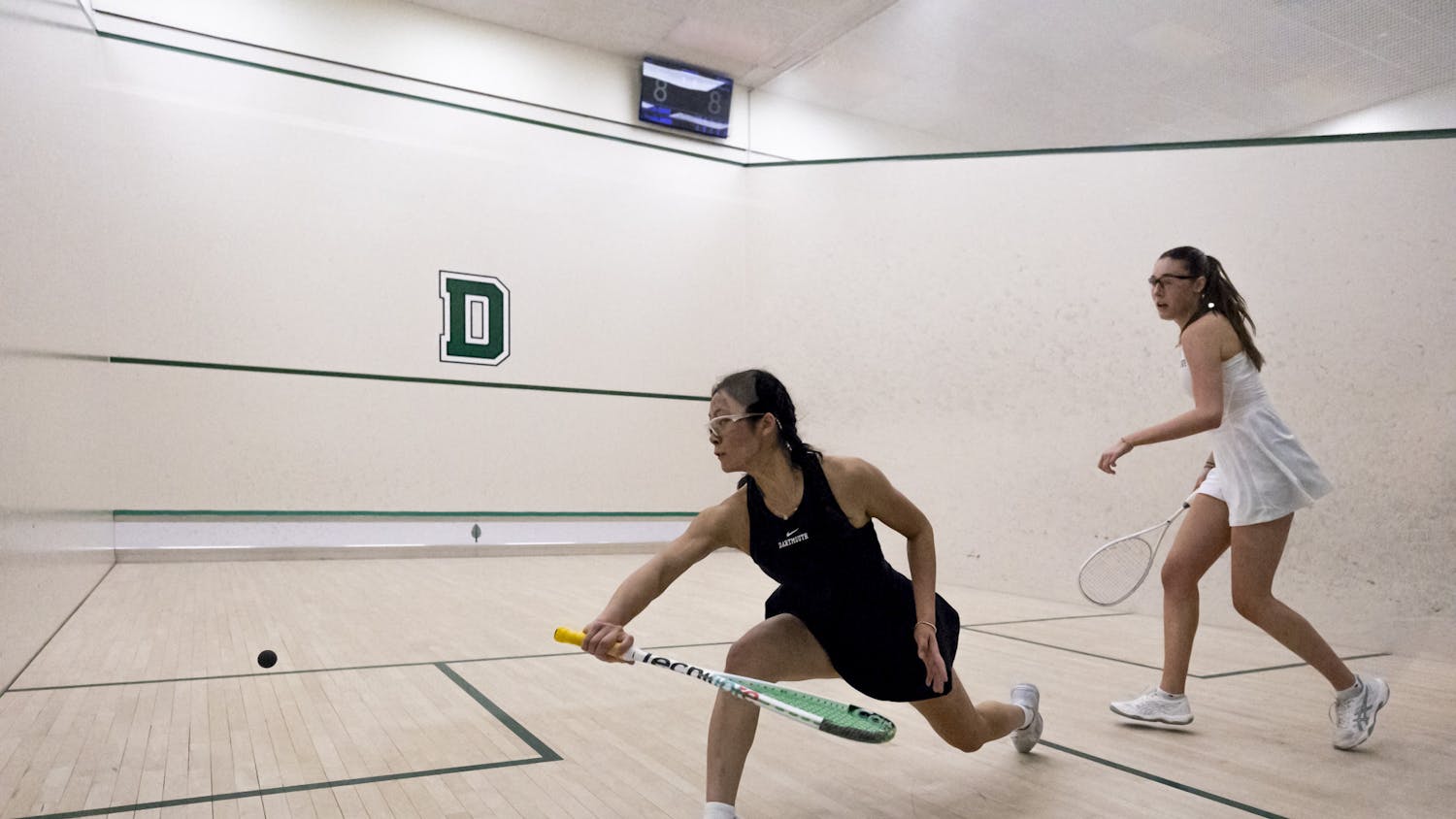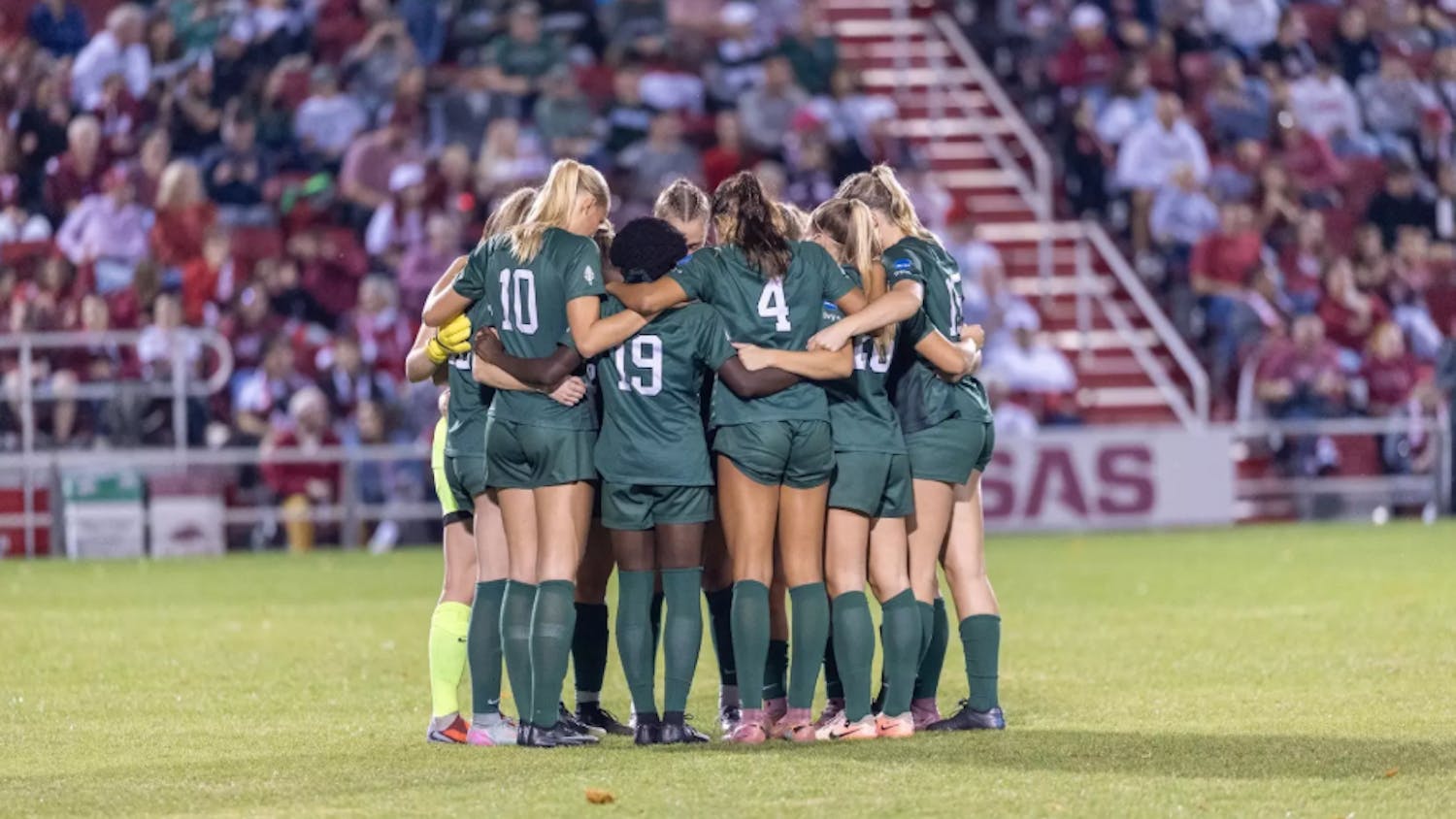The main distinction between athletic trainers and team physicians is their different backgrounds in sports medicine. While athletic trainers typically obtain bachelor's degrees in sports medicine and may obtain more advanced degrees, team physicians are normally doctors in the field of orthopedics, often with a concentration in sports medicine.
Trainers and physicians often follow different paths to the sports medicine field. Head athletic trainer Jeff Frechette grew up as an athlete in nearby Woodstock, Vt. One of his coaches knew Dartmouth's former head athletic trainer Fred Kelley, and the rest was history.
"I knew then that I had an interest in pursuing sports medicine, so I went to college for it," Frechette said. "I saw an ad in the Valley News for an opening at Dartmouth in the fall of 1981, and I've been here ever since."
Most team physicians begin their relationship with Dartmouth sports while still training to become doctors. Residents from the Dartmouth-Hitchcock Medical Center are on hand for every Dartmouth football game, as well as home lacrosse and hockey games. Dartmouth's current director of sports medicine, orthopedic surgeon and team physician Charlie Carr '79 Med'81, found his start in the program while still a resident.
"I was training to be an orthopedic surgeon back then and realized I had an interest in sports medicine," Carr said. "Eventually, I came back on staff at the Dartmouth-Hitchcock Medical Center and then took over as team physician 15 years ago."
Trainers and physicians also differ in the degree of contact they have with individual teams. Athletic trainers mostly care for one team per season and attend each of that team's practices and games. Dartmouth's doctors, however, focus more on the big picture, running rehabilitative clinics daily for Dartmouth student-athletes while also attending games to tend to more serious injuries.
"One of our recruits got hurt erg-ing, and he just had shoulder surgery," rower Will Lynch '16 said. "From what I can tell, the doctors and clinics are really expediting the recovery process."
Even though trainers and team doctors have very different relationships with sports teams at Dartmouth, most enjoy interacting with student-athletes immensely.
"The best part of the job is being included as part of the team," Carr said. "It's what makes the eight-hour travel time to Cornell [University] all worth it."
Interesting travel stories seem to be a trademark of sports medicine. Athletic trainers always travel with their teams to away games, leading to a great deal of bonding time.
"I remember taking a bus ride from West Point to Princeton [University] where our driver started taking the team the wrong way up the mountain," Frechette said. "We slipped on a little black ice, had to pull onto the side of the road and were delayed for about four hours. We didn't end up getting into Princeton until 6 a.m. that morning for our 3 p.m. game."
Often, athletic trainers form bonds with players that last long after the students graduate. Frechette recalled one of his favorite Dartmouth student-athletes, former hockey player Danny Casella '02.
"We used to get in a bit of a prank war with each other," Frechette said. "I'd come into my office, and he'd have put my furniture upside down, so I'd get back at him by plexi-wrapping his skates. It can be a great way to break up the occasional monotony."
Although members of Dartmouth's sports medicine staff take a great deal of pleasure in their jobs, they are serious when it comes to keeping Dartmouth student-athletes safe and healthy. The team doctors and athletic trainers work together whenever an injury occurs on the field to ensure that the student-athlete receives the proper treatment.
"Even though our trainers and doctors have very different areas of expertise, they always come together well to help out our injured athletes," Lynch said.
The first responders when an injury occurs are normally the trainers, who run out to check whether the player can leave the field under his or her own power or whether a stretcher is needed. After they bring the injured player to the sideline, the trainer and doctor assess the nature of the injury. In rare cases, the athlete may need to go to Dick's House for an X-ray or to DHMC for further treatment. Most of the time, however, assistance is provided directly on the sideline.
The sports medicine profession has changed drastically over the last 25 years, particularly across the college landscape. In the past, there were only a handful of schools that offered accreditation in sports medicine at the undergraduate level, but sports medicine as a major is becoming increasingly common. Though Dartmouth does not offer a sports medicine major, the school's sports medicine staff has expanded in size and scope over the past several decades.
"Our program has become much more organized in care of the athlete," Carr said. "In the past, we were much more cavalier, but now we manage the details of any injury with more seriousness, particularly regarding things like concussions."
Those involved with the program also noted the increasing time demands placed on student-athletes. With the proliferation of offseason workouts and the lengthening of many teams' seasons, injuries occur with ever greater frequency. Despite the obvious difficulty of their jobs, the Dartmouth sports medicine staff members remain ready and on call to ensure that Dartmouth student-athletes can play their best.




